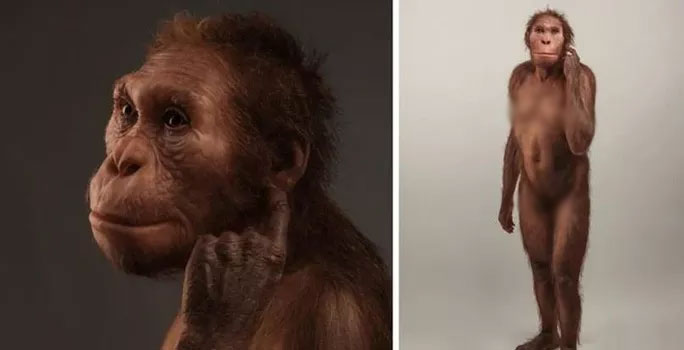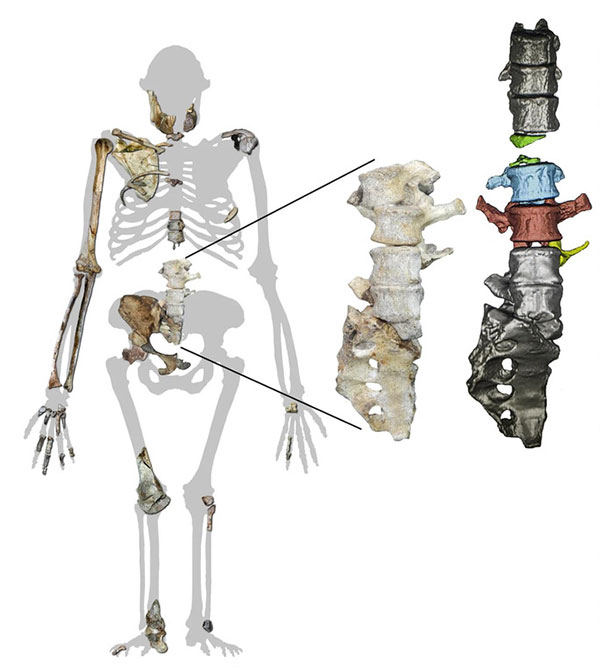A Breakthrough Evolutionary Step That Distinguishes Humans from Other Apes Found in the Body of Issa, a 2-Million-Year-Old Woman.
The Science Alert reports that paleontologist Lee Berger from the University of Witwatersrand (South Africa), a member of the research team, stated: “Issa walked like a human but could climb like an ape.”
The lineage of Issa, a Southern Ape, is one of the earliest species to begin exhibiting human traits, with several valuable fossils having been excavated. The analysis of Issa’s skeletal framework has provided the final pieces of the puzzle regarding how the spine and other parts of the skeleton began transforming into what we recognize as modern humans.

A graphic simulation of the portrait of Issa – (Image: Elisabeth Daynes/S. Entressangle).
Issa was discovered in Malapa, South Africa, with fossils that include lumbar vertebrae. “Lumbar vertebrae are extremely rare in the hominin fossil record,” explained evolutionary morphologist Scott Williams from New York University (USA), a member of the research team.
Additionally, the fossils include an important part of the knee region, where the angle of the femur connecting to the knee indicates that Issa stood upright. The reconstruction of a portion of the spine using CT scanning confirmed that Issa’s species had an inward curvature in the lumbar spine similar to ours, which is the clearest evidence of bipedalism.
However, other features indicate that Issa was still adept at climbing like an ape.

The fossil remains of Issa consist of only a few parts, yet they include crucial elements showing she was bipedal – (Image: New York University/University of Witwatersrand).
Previously, Homo erectus, an extinct ancient human species, appeared on Earth around 1.8 to 2 million years ago and is nicknamed “the upright man” because it was the first confirmed species to move by walking like us and nearly abandoned climbing, with hands becoming adept at using tools. However, the evolutionary steps that led to Homo erectus remain a mystery.
Issa may hold the answer. Her lineage of Southern Apes has a history spanning millions of years with individuals that exhibited distinct differences, evolving through various periods. Clearly, the ability to stand upright developed in later Southern Apes like Issa, marking a significant step toward their evolution into true humans.
Furthermore, the authors of the study noted that understanding the evolutionary process of the lower back will greatly aid medicine in preventing injuries and maintaining a healthy back, as this is one of the most injury-prone and painful areas of the human body.
The study was recently published in eLife.

















































